How do you know if your social strategy is hitting the mark? Is 100 likes a big deal or just average? And what’s the optimal time to share your content?
Unfortunately, there’s no one-size-fits-all answer. It all comes down to factors like your industry, the platforms you’re active on, and the makeup of your audience.
That’s where social media benchmarks come into play. These numbers provide a snapshot of what’s typical for your industry in terms of engagement and growth, helping you see how your efforts measure up.
Keep reading for a handful of the most recent stats data collected in March 2025 for the education sector that will help you put your results in perspective.
Psst: Once you grab your benchmarks, head to our guide to using social media for marketing in education to find out how to action these insights.
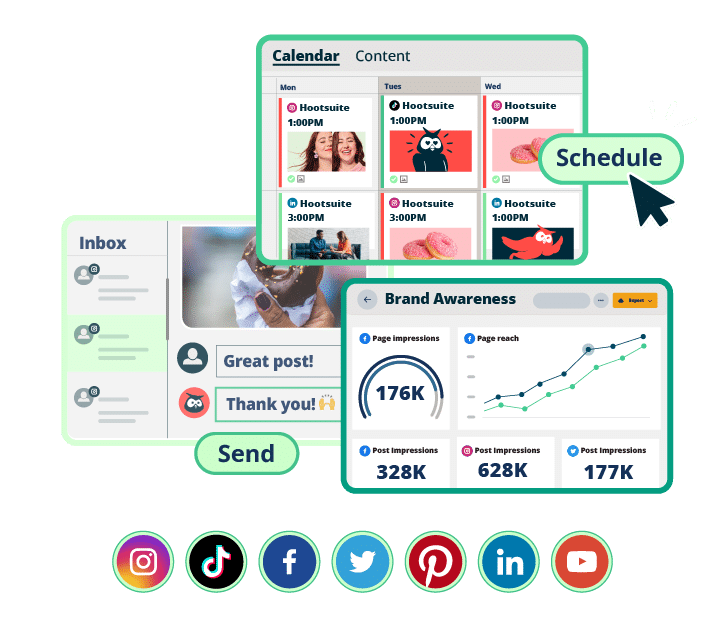
Meet students where they’re at with the tool that makes it easy to engage, recruit, schedule, measure, and win.
Book a DemoBest times to post on social media for education
Below, you’ll find recommendations for the best times to post on Instagram, Facebook, TikTok, X (formerly Twitter), and LinkedIn for maximum engagement.
Note: Time of day was localized across 118 countries where sample data came from, i.e. the graphs are accurate across time zones.
Best time to post on Facebook
According to our research, 6 pm on Saturdays is the best time for educational institutions to post on Facebook.
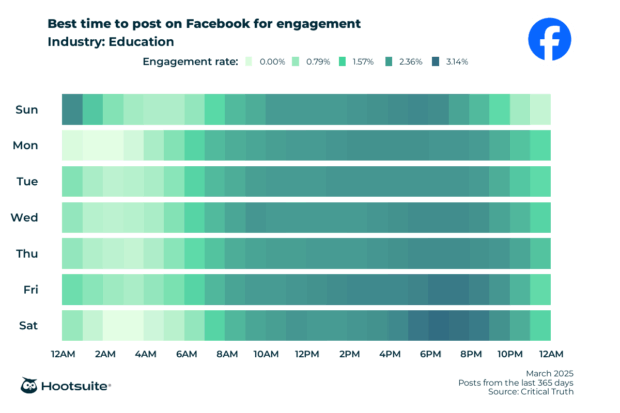
Best time to post on Instagram
Per Hootsuite’s data, 8 pm on Wednesday is the best time for educational institutions to post on Instagram.
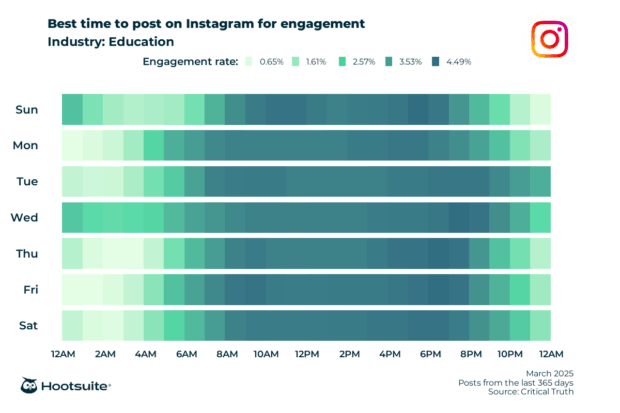
Best time to post on TikTok
Wednesday between 4-6 pm is the best time for educational institutions to post on TikTok.
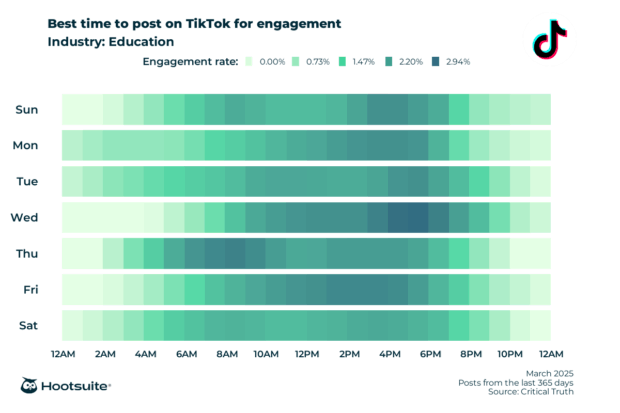
Best time to post on X (Twitter)
Tweets on Thursday at 10 pm tend to generate the highest engagement for educational institutions on X.
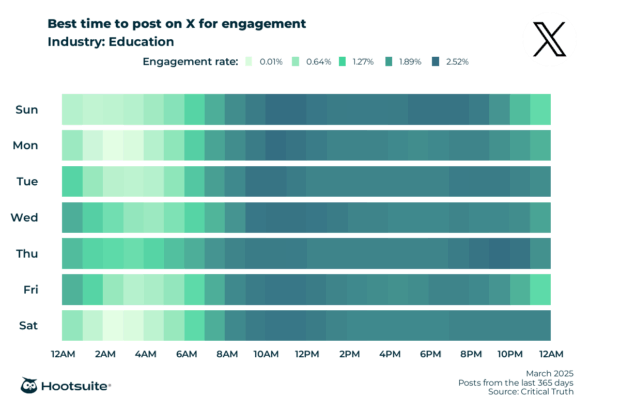
Best time to post on LinkedIn
According to our research, 5 am on Monday is the best time for educational institutions to post on LinkedIn.
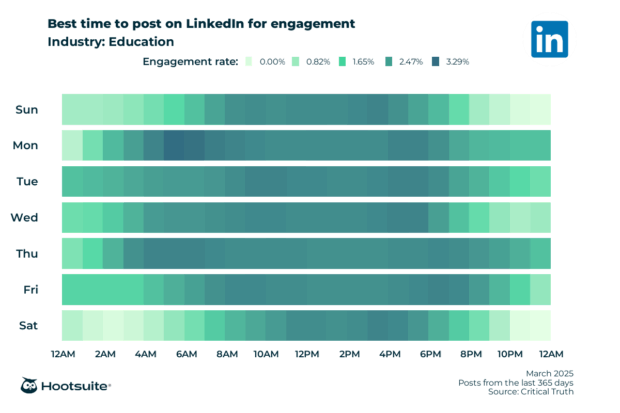
How often should you post on social media in education?
Every institution’s ideal posting schedule is unique, and you should test different posting frequencies to find out what works best for your audience. That said, these industry-specific stats will help you find a data-informed starting point.
Our research found that educational institutions post on X (Twitter) more often than on other social platforms — an average of 10 times a week.
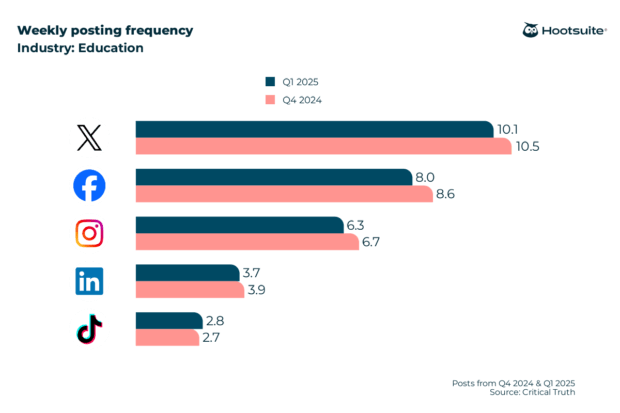
Below, you’ll find network-specific data that illustrates how posting frequency corresponds to overall engagement rates.
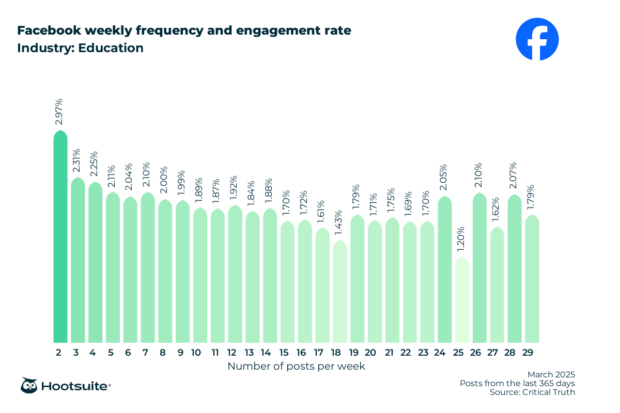
On Facebook, performance depends more on the content you post than on how often you post. However, institutions that posted twice per week saw a higher engagement rate of 2.97%.
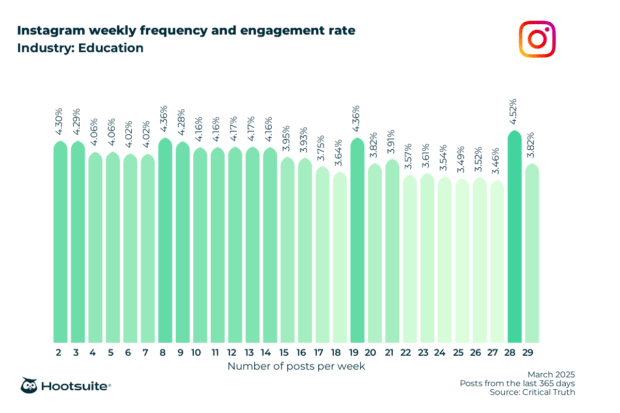
On Instagram, you’re most likely to keep your audience engaged if you keep your posting schedule busy and consistent. Posting 8, 19, or 28 posts a week seems to yield the highest engagement!
Though, if that sounds like a bit much, posting between 2 and 15 posts per week garners nearly the same engagement, too.
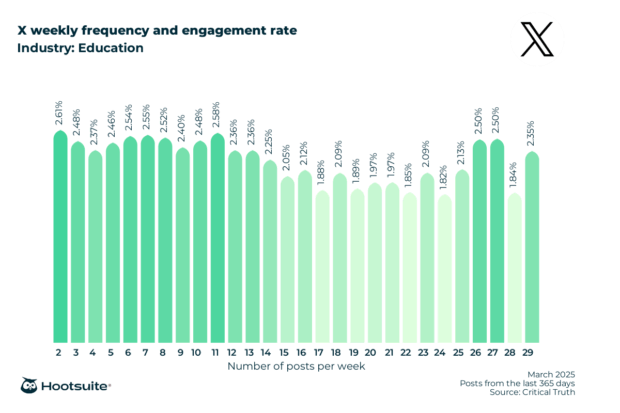
… whereas on X (formerly Twitter), 2 posts a week are enough to keep engagement rates high.
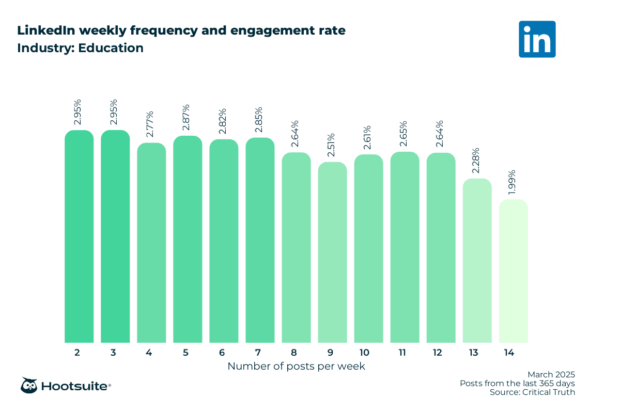
On LinkedIn, institutions posting 2-3 times a week see the highest average engagement on their posts…
Average engagement rates in education
Wondering if your engagement rates are high enough? Here are the industry averages across all major social networks as of March 2025:
- Instagram: 4.2%
- Instagram Reels: 3.1%
- LinkedIn: 2.8%
- X (Twitter): 2.4%
- Facebook: 2.19%
- LinkedIn: 2.2%
- TikTok: 2.3%
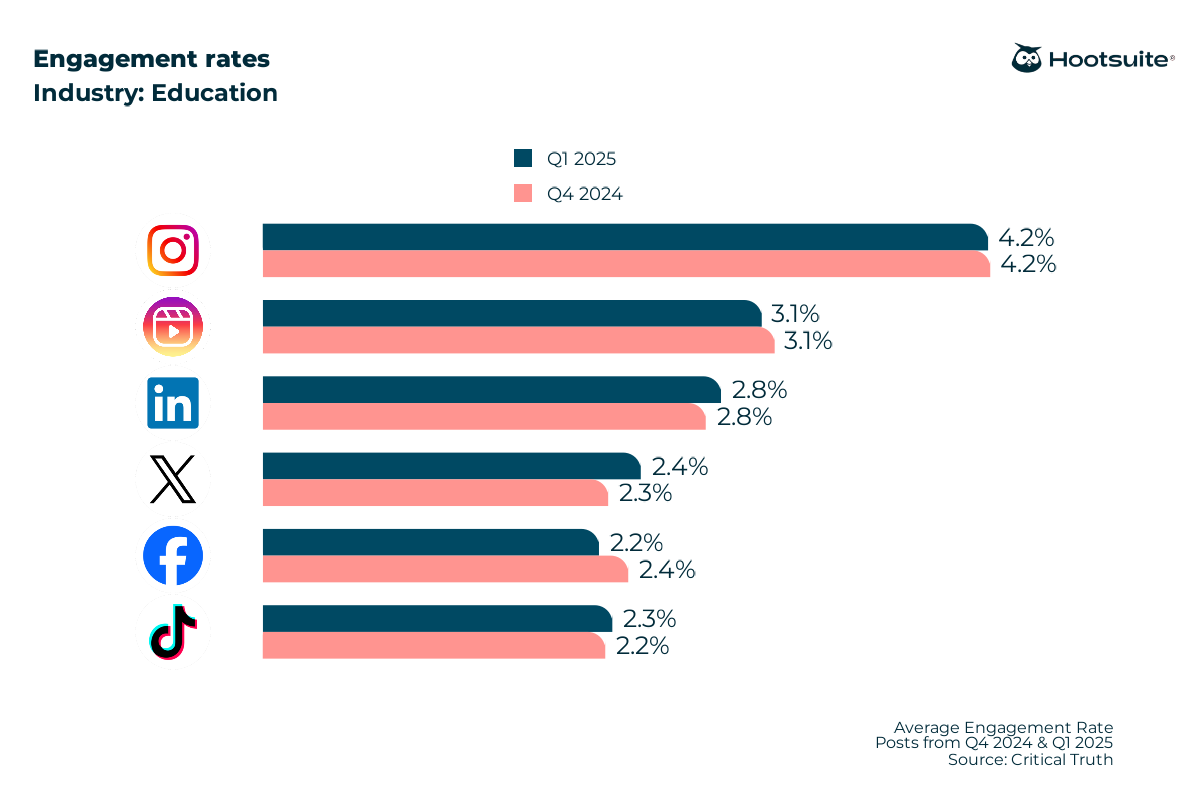
What should educational institutions post on social media?
Different social networks offer different content formats — but how do you decide which should dominate your content mix?
Here’s what our research says.
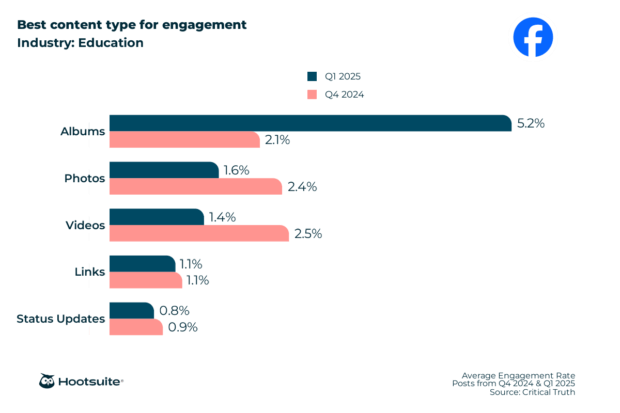
On Facebook, album posts generate the most engagement — followed by posts with photos, videos, and links.
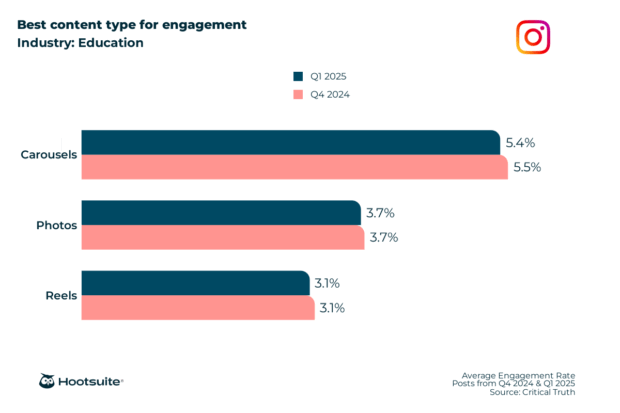
Instagram users particularly enjoy carousel posts, which — in education — generate almost double the engagement of Reels.
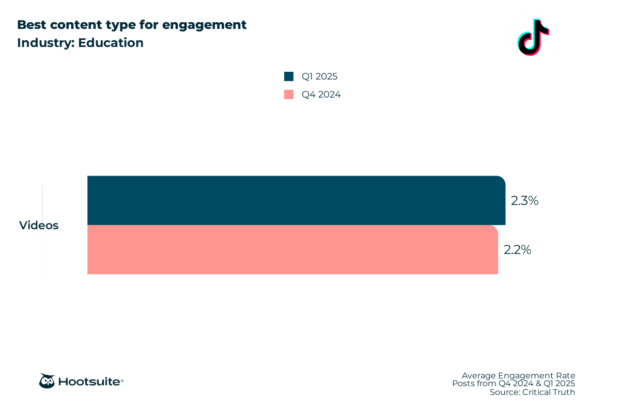
On TikTok, videos reign supreme, generating the most engagement.
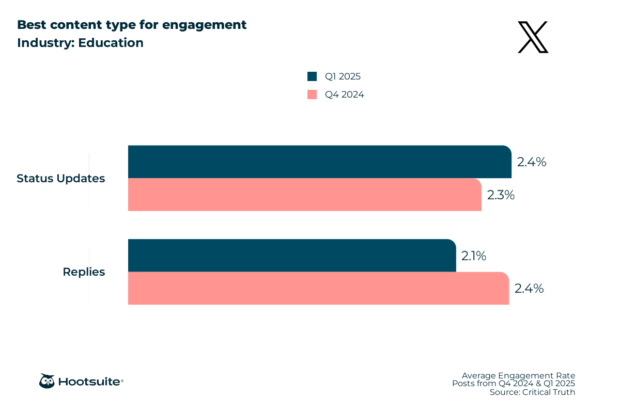
Over on X (Twitter) status updates carry more weight (2.4% engagement) than replies (2.1% engagement).
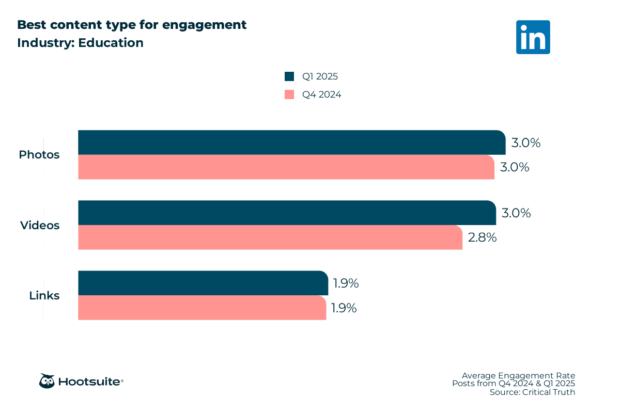
On LinkedIn, posts with photos and videos outperform posts with links.
Follower growth rate in the education sector
If your social media strategy revolves around growing your audience, make sure you’re setting realistic goals.
According to our research, educational institutions saw 2.28% weekly follower growth on TikTok, over double the growth seen in Q1 2025 for Facebook, Instagram, LinkedIn, and X (Twitter).
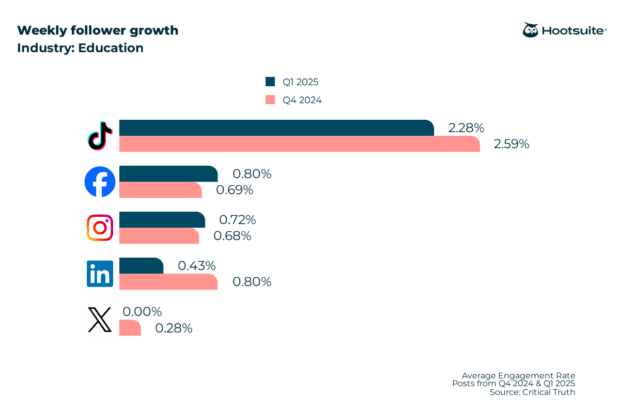
Hootsuite is the most trusted social media management tool for educational institutions. Schedule content, use powerful social listening tools, and keep students, parents, and alumni engaged with a universal social inbox — all with ROI-proving analytics to push growth to the next level. Try it today.
The post Social media for education: Q1 2025 benchmarks + new data appeared first on Social Media Marketing & Management Dashboard.
br https://ift.tt/5ZguFGD
https://ift.tt/JwgOvTc
Comments
Post a Comment